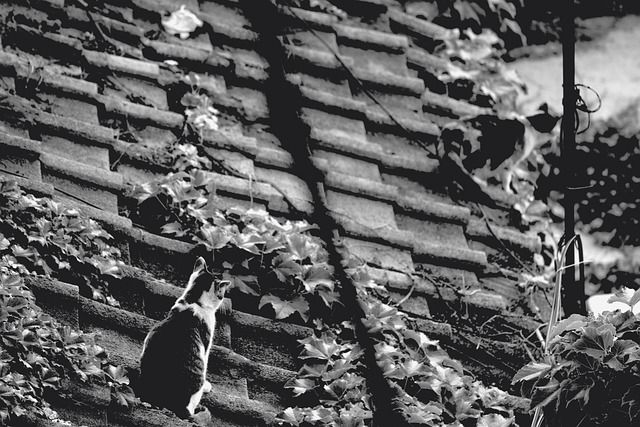Roof flashing is an essential defense against water damage and leakages for Austin homes, requiring regular inspections and prompt repairs. Common issues include damaged or loose flashing, improper sealing around vents and valleys, leading to mold growth and structural damage if left unchecked. Skilled professionals address these problems using high-quality materials, while homeowners can learn a simple step-by-step guide to fix flashing themselves. Annual maintenance ensures optimal roof integrity and longevity by identifying and rectifying issues before they escalate, crucial for Austin's unique climate conditions.
“In the realm of Austin roof repair, understanding roof flashing is key to safeguarding your home from water infiltration. This vital component plays a crucial role in maintaining the integrity of your roof system. This article delves into the intricacies of roof flashing, highlighting common issues and their impact on your property. We provide a comprehensive step-by-step guide to fixing flashing, along with essential maintenance tips, ensuring long-lasting protection against water damage.”
- Understanding Roof Flashing and Its Role in Water Prevention
- Common Issues with Roof Flashing and Their Impact
- Step-by-Step Guide to Fixing Roof Flashing
- Maintenance Tips for Long-Lasting Protection Against Water Infiltration
Understanding Roof Flashing and Its Role in Water Prevention

Roof flashing is a crucial component in the intricate system designed to keep your Austin roof repair needs to a minimum. It’s more than just a strip of metal; it acts as a vital barrier, sealing joints and openings where your roof meets other structural elements, like chimneys, vents, and walls. Without proper flashing, water can infiltrate these areas, leading to costly damage over time.
Understanding the role of flashing in your Austin roof’s defense against water infiltration is key to maintaining a dry and safe home. It prevents leaks by creating a watertight seal around fixtures that pierce the roof, ensuring moisture doesn’t find its way into your attic or walls. Regular inspections and timely repairs are essential to keeping this barrier effective, thereby reducing the need for frequent Austin roof repair services.
Common Issues with Roof Flashing and Their Impact

Roof flashing, a crucial component in any roofing system, often faces several issues that can lead to significant problems if left unaddressed. One of the most common issues is loose or damaged flashing, which creates gaps allowing water to infiltrate behind the shingles. This not only leads to water damage but also promotes mold growth and structural decay over time.
Another frequent problem is poor installation or sealing, especially around vents, chimneys, and valleys. These areas are particularly vulnerable to leaks, as they often experience higher wind speeds and varying temperature changes. In Austin roof repair services, skilled professionals frequently encounter these issues and promptly address them using high-quality materials and techniques to ensure the longevity of the roofing system and protect homes from potential disasters caused by water infiltration.
Step-by-Step Guide to Fixing Roof Flashing

Fixing roof flashing is a crucial step in preventing water infiltration and ensuring your Austin roof remains in top condition. Here’s a straightforward, step-by-step guide to tackling this task yourself:
1. Inspect and Assess: Begin by thoroughly inspecting your roof and identifying the areas where flashing needs repair. Look for any signs of damage, cracks, or lifting edges. This could be particularly evident around chimneys, vents, or other roof penetrations. Take note of the type of flashing used (e.g., metal, rubber) as this will guide your repair process.
2. Gather Materials: Before you start, ensure you have all the necessary tools and materials on hand, including a new piece of flashing material, a hammer, a utility knife, roofing cement or caulk, and a brush. Choose materials compatible with your existing flashing for optimal durability. In Austin’s climate, weather-resistant, flexible flashings are ideal.
3. Remove Old Flashing: Carefully remove the old flashing by detaching it from the roof and the surrounding shingles. Use the hammer and utility knife to cut away any remaining adhesive or cement. Ensure you leave no traces of old flashing behind to avoid complications during the installation of new material.
4. Prepare New Flashing: Measure and cut the new flashing to fit precisely around the area of concern. Ensure it’s long enough to overlap into the surrounding shingles by about 2-3 inches. This provides a watertight seal when secured in place.
5. Apply Adhesive or Caulk: Use roofing cement or caulk to adhere the flashing to the roof deck, following manufacturer instructions for proper application and drying times. For better bonding, consider cleaning the roof deck with a wire brush first.
6. Secure Flashing: Once the adhesive has set (or caulk is dry), use a hammer and nails to securely fasten the flashing in place, ensuring it remains tight against the shingles around it.
7. Inspect Your Work: After completing the repair, inspect your handiwork from different angles to ensure everything looks neat and watertight.
Maintenance Tips for Long-Lasting Protection Against Water Infiltration

Regular maintenance is key to ensuring your roof flashing effectively prevents water infiltration and prolongs the lifespan of your Austin roof repair. Here are some essential tips to keep your flashing in top condition:
Inspect your roof flashing at least once a year for any signs of damage, corrosion, or loose connections. Promptly address any issues found to prevent further complications. During these inspections, check for proper sealing around joints and vents, ensuring no gaps exist for water to enter. Consider using a flashlight to detect any hidden leaks or moisture buildup.
When it comes to protecting your home from water damage, roof flashing is an often-overlooked but critical component. By addressing common issues and implementing proper maintenance, Austin roof repair professionals can ensure that your home stays dry and secure for years to come. Regular checks and timely repairs of roof flashing are essential investments in safeguarding against costly water infiltration. Remember, a little prevention goes a long way in the world of austin roof repair.
